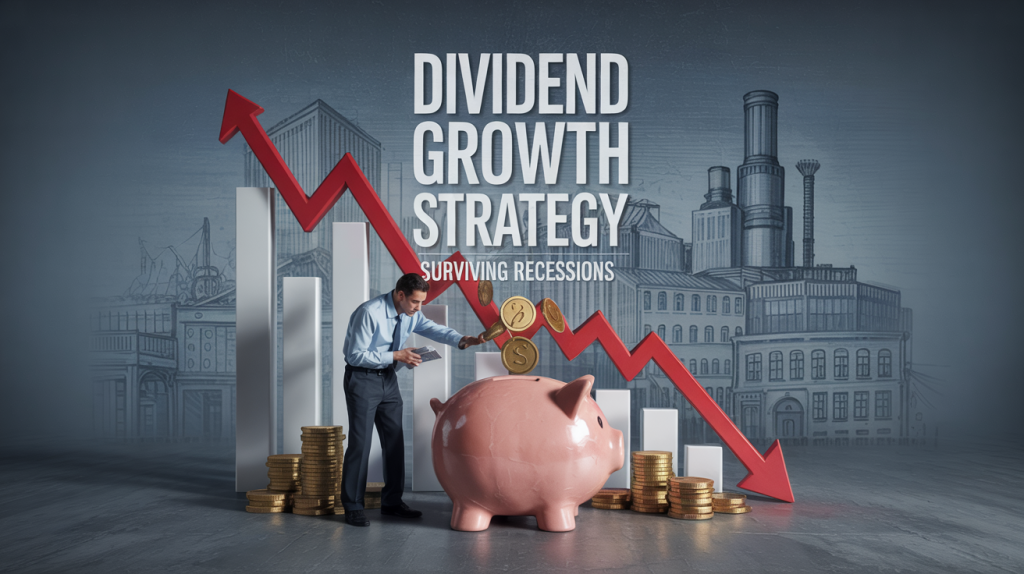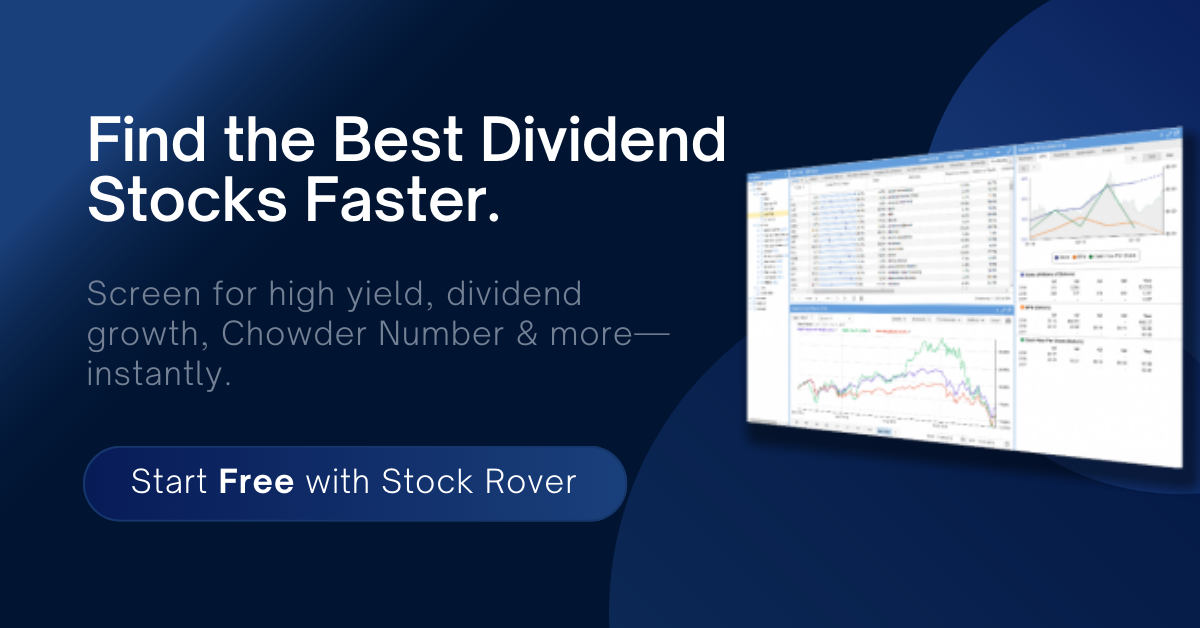
Why You Need a Recession-Proof Dividend Growth Strategy Today
You’re not just building a portfolio. You’re building protection—against inflation, uncertainty, and the next bear market.
While most investors are glued to CNBC and trading apps, worrying about when the next rate hike will crush their growth stocks, you’re taking a very different approach. You’re quietly accumulating income-producing assets. You’re choosing predictability over hype, staying focused on rising cash flow, and structuring your portfolio to stand tall when everything else crumbles.
That’s what a true dividend growth strategy does. And when built right, it becomes a fortress—one that not only survives recessions but turns them into opportunities.
Let me show you how to build yours.
What Makes Dividend Growth Strategies Different (And Safer)
Dividend growth investing isn’t about chasing high yields or monthly gimmicks. It’s about selecting quality businesses that have a history—and a culture—of sharing their growing profits with shareholders.
A well-built dividend growth portfolio compounds wealth in two dimensions: it grows in value, and it grows in income. That dual engine is what sets it apart.
While high yield strategies often leave you with declining capital and frozen dividends when the economy hits a rough patch, dividend growth investing does the opposite. It gives you rising income and capital resilience precisely when you need it most.
And just as important—it removes the need to guess market direction. You’re paid to wait.
But don’t mistake any dividend payer for a fortress builder. Most aren’t. The ones that are share some critical traits.
The 5 Traits of Recession-Proof Dividend Growth Stocks
Not all dividend growth stocks deserve a spot in your portfolio. If you want rising income and downside protection, you need to be selective.
- Look for low payout ratios. Companies that distribute 30-50% of earnings as dividends have flexibility. They can continue growing payouts even in a down year.
- Make sure they have strong balance sheets. Recessions are survivable when a company isn’t drowning in debt. You want net cash or modest leverage.
- Favor companies with a history of dividend increases. A company that’s increased dividends for 10, 20, even 50 consecutive years isn’t likely to stop just because the market turns sour.
- Choose businesses with resilient models. Recession-resistant sectors like consumer staples, utilities, and healthcare help you sleep better at night.
- Find companies with moats and pricing power. Those with durable competitive advantages and sticky customers can raise prices and protect margins when others can’t.
You can use Chowder rule to choose your dividend growth stocks. These characteristics aren’t negotiable. They’re your blueprint. Once you have your list of candidates, the real work begins: constructing a portfolio that doesn’t just grow—but endures.
Building the Dividend Growth Fortress—Your Defensive Architecture
Most investors buy dividend stocks like they’re filling a grocery cart. That’s not how you build a fortress. You build it like an engineer—deliberately and structurally.
Here’s how I approach it:
Portfolio Structure
I start by equal-weighting each position. This keeps risk balanced and prevents emotional overweighting of “favorites.”
I use a Fidelity basket to manage the portfolio. It lets me automate rebalancing, monitor allocations, and place a single order that updates everything. You can replicate this function using M1 Finance Pies feature.
Dividend Reinvestment
Dividends are pooled into cash instead of being automatically reinvested back into the payer. Then, periodically, I redeploy this cash into the stocks that have drifted below their target weight. This reinvestment approach—targeting the underweights rather than simply using DRIPs—ensures you’re always allocating capital where the future returns are likely to be strongest.
I also choose stocks with staggered dividend payout schedules. This allows for monthly cash flow, which makes it easier to stay consistently invested and to redeploy dividends throughout the year without delay. You’re buying low automatically, month after month. That’s how a fortress compounds.
Diversification: Spread Your Moats, Not Your Weaknesses
Fortresses fall when they’re concentrated in the wrong places. Dividend investors often overweight real estate, banks, or energy because of the yield. That’s a recipe for disappointment.
You want diversification, not diworsification.
I aim to balance sectors intentionally, with exposure across consumer staples, healthcare, industrials, and tech. I avoid overcorrelation by spreading across industries that react differently to economic cycles. And I include global names sparingly, especially when international valuations or payout cultures are compelling.
This approach doesn’t just reduce risk—it helps protect your dividend income during drawdowns. A strong quarter from PepsiCo or Johnson & Johnson can offset a weak one from a cyclical holding.
Diversification isn’t sexy. But in a downturn, it pays the bills.
How This Fortress Performs During Recessions
Let’s talk about the stress test.
When markets fall, the average investor loses capital, loses confidence, and often loses patience. But if you’ve built your dividend growth fortress properly, here’s what happens instead:
Your portfolio income increases. While prices fall, the businesses you own continue to raise dividends—or at the very least, maintain them.
You get reinvestment opportunities. Lower stock prices mean your pooled dividends now buy more shares of quality names.
You don’t have to sell anything. With rising income, you can fund living expenses, reinvest, or sit tight while others capitulate.
This is why dividend growth investing is as much a behavioral advantage as it is a financial one. You’re not reacting to red arrows on the screen. You’re collecting payments, allocating capital, and compounding without panic.
Final Thoughts: Your Fortress Doesn’t Just Survive—It Compounds
If you want to see this strategy in action, my Dividend Fortress Portfolio is available exclusively to Founder’s Club members. It’s a live, actively managed portfolio that embodies everything discussed in this article—automated, optimized, and built to endure. Click here to learn more and join the Founder’s Club.
A recession is not a reason to pause your investment strategy. It’s the reason to have one. And if your strategy revolves around growing dividends from high-quality businesses, you’re already ahead of 90% of the market.
You don’t need to outguess the Fed. You don’t need to know what GDP will do next quarter. You just need to know what your portfolio will pay you next month.
That’s the power of a disciplined dividend growth strategy. That’s what builds freedom, one cash payment at a time.
You’re not just building a fortress. You’re building your exit plan.

Shailesh Kumar, MBA is the founder of Astute Investor’s Calculus, where he shares high-conviction small-cap value ideas, stock reports, and investing strategies.
His work has been featured in the New York Times and profiled on Wikipedia. He previously ran Value Stock Guide, one of the earliest value investing platforms online.
Subscribe to the Inner Circle to access premium stock reports and strategy insights.
Featured in:


